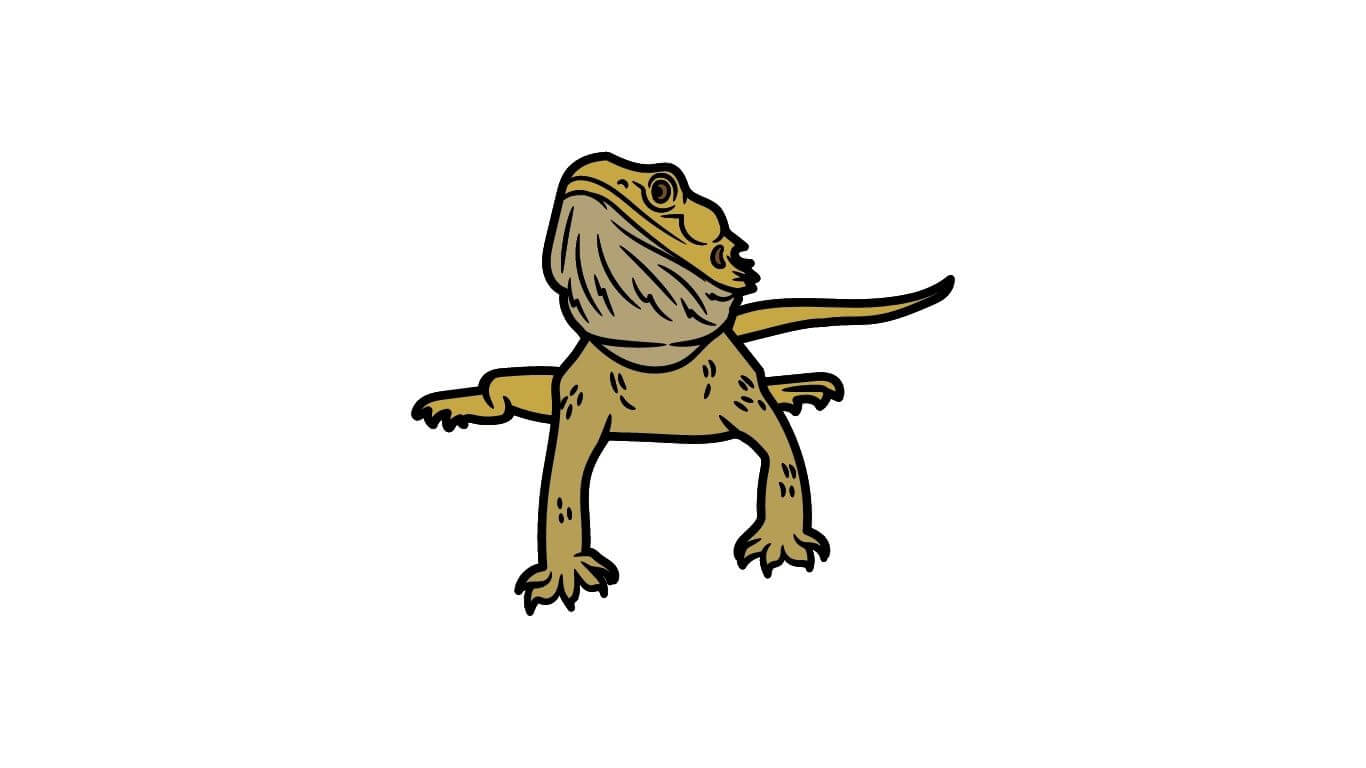
While birds and mammals contain melanocytes, chromatophores are found in reptiles, fish, amphibians, cephalopods, and crustaceans. In ectotherms, such as bearded dragons, chromatophores are pigment-containing and light-reflecting cells that form eye and skin hues. A bearded dragon’s color change may target specific parts such as the head, neck, tail, stomach, chest regions, belly, or occur all over, depending on the cause.
Can Bearded Dragons Change Color?
Bearded Dragons can change color. They can change color depending on their internal body temperature to help with thermoregulation and to communicate social signals. They may also change their hue to blend in with their surroundings. Color change methods are used by several reptiles, who re-distribute color pigment throughout their skin cells. This unique tactic is capable of Bearded Dragons, and it advantages them in various ways. To begin with, a color change is well-known in Bearded Dragon communication, particularly in the form of their beard color. Other beardies can tell if they’re furious or threatened by the color of their beard or if they’re submissive and nice by the color of their beard.
In Bearded Dragons, color-changing methods are also used to improve thermoregulation efficiency. The hue of a Bearded Dragon when it is cool is dark brown. Darker hues reflect less light, allowing heat to be absorbed more easily. They will become light-yellow tint when they reach the correct temperature. Lighter colors reflect more light, which keeps Bearded Dragons from absorbing too much heat and overheating.
This temperature-dependent color shift also benefits with camouflage, as a Bearded Dragon’s tone will match the amount of sunlight and shadows in their habitat to blend in. Bearded Dragons’ color-changing skills are remarkable in that they can balance environmental color change with social color change, adhering to both at the same time.
Do Bearded Dragons Change Color as They Get Older?
A Bearded Dragon’s main colors and patterns will not alter as they age. However, the tone of color may change from juvenile to adult to elderly. This may appear to be a color change; however, the brightness of the colors is shifting rather than the colors changing. A Bearded Dragon’s color and pattern are determined by their DNA. What they display is determined by their genetic makeup, and this will not change as they grow older.
As a beardie grows, the pigment in their skin stretches to match their developing body, causing their patterns and colors to shift. Bearded Dragons in their later years may appear duller than their youthful counterparts. Again, this isn’t a physical color shift because their genetics are unaffected; instead, their bodies are less efficient at producing the same pigment quality, resulting in colors that appear duller and less bright.
Do Bearded Dragons Change Color When Stressed?
The color of a beardie’s beard can be used to signify stress. Their beard will turn jet black to express rage, displeasure, or a sense of being threatened. Beardies who are stressed can develop stress marks. As a sign of stress, Beardie will intentionally blacken their beards. If your beardie is dissatisfied interacting with you, you may notice this when you clean the enclosure or handle it. A black beard is a temporary color change that signifies stress. It does not signify long-term stress. Small dark marks on your beardie’s ventral side (underneath) may indicate long-term stress. The color of these marks will alter, and they will be darker than the rest of the belly.
Do Bearded Dragons Change Color When They Sleep?
When Bearded Dragons are cool, they will turn a darker color to absorb more heat energy. Because nighttime temperatures are lower than daytime temperatures, this could happen while they sleep. When they first wake up, they will be chilly and have a dark color that will lighten throughout the day as they warm up. However, scientists have discovered that when your beardie is sound sleeping in the middle of the night, its color will fade. This is most likely due to their inability to adjust the color darker to match their reduced body temperatures during sleeping.
Do Beard Dragons Change Color During Brumation?
No, it is unlike your bearded friend to change color during brumation. This is because your beardies system shuts down during brumation, and therefore, they do not communicate or thermoregulate.
Do Bearded Dragons Change Color After They Shed?
Your bearded friend may appear to have changed the color they shade. Prior to shedding, your beardie may appear very light. After shedding, your bearded friend may appear vibrant and colorful. However, bearded dragons do not change color when shedding. This is because beardie pigments, responsible for color and pattern creation, are found deep under the skin layers. Shedding happens when the top layers of skin, white and devoid of color pigment, are lifted.
Do Bearded Dragons Change Color When They Are Happy?
When warm and happy, bearded dragons will shift color and lighten. This color change is linked to the environment, and happy Bearded Dragons require a suitable environment.
Summary
Color changes in the bearded dragon are always expected. On most occasions, your beardie may change its color to aid in thermoregulation and communication. It is good to understand your beardies’ color changes for you to help them should there be an issue.
You will like What Animals Can Live With A Bearded Dragon?
- Are you supposed to clip a bearded dragon’s nails? - October 21, 2022
- What do you do when you first get a bearded dragon? - October 21, 2022
- What is the best vegetable for bearded dragons? - October 21, 2022
